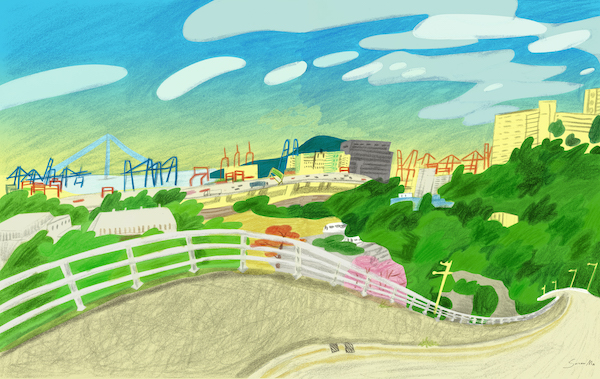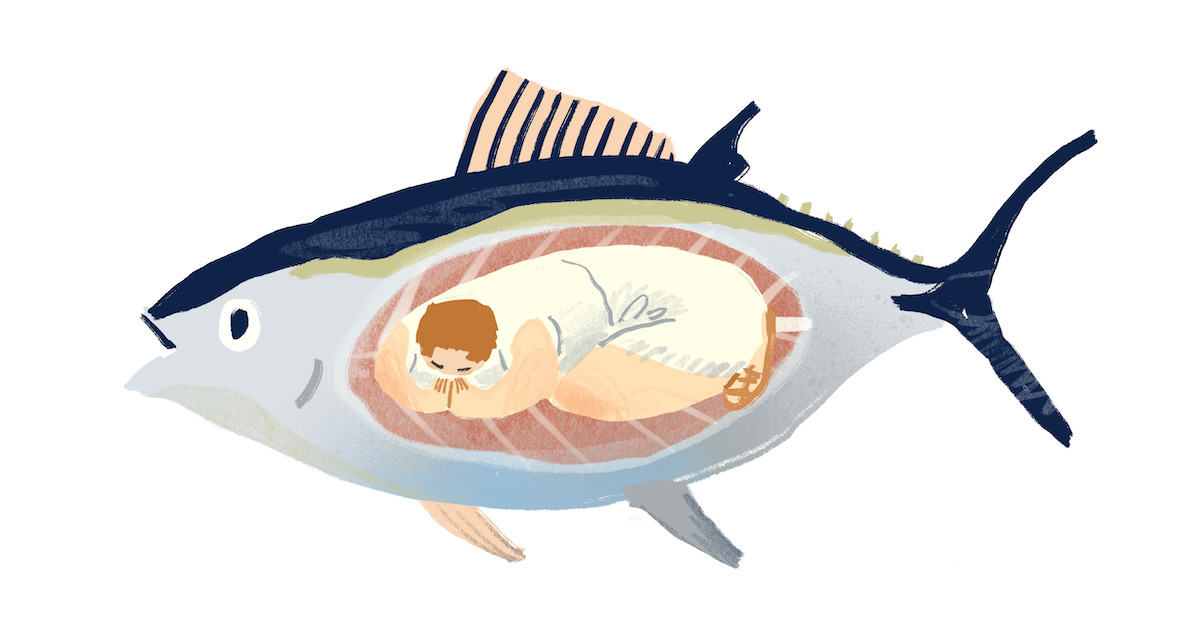Heidi Salzwedel, a graduate of the Stellenbosch and Rhodes Universities, is an art and design educator, and an artist/writer who lives and works in Cape Town.
Learn more about Suison Ma (suisonma@gmail.com) at www.suisonma.com and @suisonma.

Heidi Salzwedel interviews Ma Wai Ting Suison, who lives and works in Hong Kong.
Heidi Salzwedel: Tell us a bit more about yourself, Suison.
Suison Ma: I was born in the mid-90s in Shenzhen (mainland China), yet raised in Hong Kong, and I graduated from the Academy of Visual Arts, Hong Kong Baptist University, in 2017. I am a multidisciplinary artist and designer who is freelancing and doing mostly commission-based work for companies. I create work which breaks away from traditional rules in aesthetics and focuses on conveying a deeper level of meaning. I follow my intuition in the creative process and my work is usually based on my imagination.
HS: What themes and types of media do you typically use when creating your work?
Suison Ma: I often create mixed-media works (usually a mixture of hand and digital drawing), and I explore the possibilities of different creative media and styles. Digital media is convenient to edit, especially if you are working on a commission. It’s pricey to have your own studio in Hong Kong so being able to work from home and keep my work on the computer is good; it only requires a small space, unlike large canvases. I can combine traditional media with digital media; like a collaboration between the old and new. I love the textures that using traditional media provides; freehand sketching with traditional media shows human emotion and seems to preserve the innocence and courage of childhood. Pencils, both black and coloured, probably were the first and simplest art materials I used in my childhood. Their texture gives me a relaxed feeling that I would like to keep in my artistic practice. I often use the daily moments of life as the theme; I want to share the sense of humour in life, and bring people happiness and warmth.
HS: What has been the path, artistically and in terms of your faith, that has led you to where you are today in your creative journey?
Suison Ma: In the past I tended to think of visual art as a worldly thing because of what I saw in the world around me. The Bible verse 1 John 2:16 explains the feeling that I used to have well: “For everything in the world – the lust of the flesh, the lust of the eyes, and the pride of life – comes not from the Father but from the world.” The main problem in visual art is not the media, it’s the attitude or intention behind it. But I’ve got a new perspective towards it now after I had experiences in knowing that God also uses art to speak in the Bible. God himself is creative, beautiful and good and that’s the main reason why I want to create.
HS: Tell us a bit more about your educational background?
Suison Ma: I studied exhibition design at the Hong Kong Design Institute first and this gave me experience in working digitally and using creative software programmes. I then moved on to study visual art at the Academy of Visual Art, Hong Kong Baptist University. It is there where I learnt how to conceptualize my art process and refine my drawing skills and later on, once I had graduated, I experimented a lot and managed to put my drawing skills and the digital art medium together.
HS: In what way does your culture inform your art making, both stylistically as well as socially?

Suison Ma: Growing up, my culture was informed by the predominant Eastern culture because of where I live, but was also heavily influenced by Western media as these are the type of movies I watched and stories that I read. In my culture, creative people are often inspired by Western pop culture as seen in movies and heard in lyrics; they recreate them but create new ideas, almost like a secondary creation.
For character design, there is a set visual language related to the shape of characters. An example is that for villains the artist usually uses triangular shapes, giving them broad shoulders. If I draw a character rounder, more circular, it can make the character more approachable.
Recently I have created a series of digital artworks which reference characters from Western Disney movies. I then added my own drawing style to reimagine these characters but also to transform them into characters which show foundational biblical principles through what they are saying. These characters are superheroes in the lives of children; recognisable heroes and villains that can be reinterpreted to tell us things about God.
This digital piece, from a series of many characters, features Cruella de Vil from 101 Dalmatians, a Disney movie which came out in 1961. It reinterprets a biblical truth about God’s sovereignty by alluding to Proverbs 14:27: “The fear of the LORD is a fountain of life, that one may turn away from the snares of death.” I have tried here, through a well-known Disney character, to show a fun way of saying that fearing the Lord, and revering him, is a good way of life.

In a famous scene from the Disney classic, The Lion King, the crafty Scar tries to overthrow the kingdom by saying “Stick with me and you’ll never go hungry again.” I’m wanting to give a new spin on Disney characters; to reinterpret these moments as Scriptures and what God is saying to us in a way that can make people happy, amused and able to take something new from a villainous character they recognise.

Gaston from Beauty and the Beast, is an obtuse, strong and heroic, but probably illiterate, character who tries to read the Bible. He is a reminder to viewers that it may be a good choice of book to read as it has words in it which, according to 2 Timothy 3:16–17, are “given by inspiration of God, and [are] profitable for doctrine … for instruction in righteousness [so that] the man of God may be perfect, thoroughly furnished unto all good works.”

HS: You seem to weave biblical truths into both Disney and biblical stories. What motivates your use of story and can you give an example of a biblical story that you have illustrated?
Suison Ma: What is the name of the fish that swallowed Jonah? The answer in my language is tuna fish (吞拿魚). The symbol 吞 means swallow, 拿 is the abbreviation of Jonah, and 魚 is fish. There is familiarity in these Bible stories – people know the stories and characters. Humour invites people in and makes them willing to engage with the biblical truth behind the story. In these illustrations of villains in Disney movies there is a way of turning their words around and relating the words to similar Scriptures. I am trying to redeem the villains of stories (or people who are running away from God in some cases, for example, in the story of Jonah) and I am wanting to show how God can redeem any person or story.

The Kirby Laing Centre for Public Theology in Cambridge. Charity registered in England and Wales. Charity Number: 1191741
Kirby Laing Centre, The New Mill House, Unit 1, Chesterton Mill, French’s Road, Cambridge, CB4 3NP
© 2022 The Kirby Laing Centre for Public Theology in Cambridge